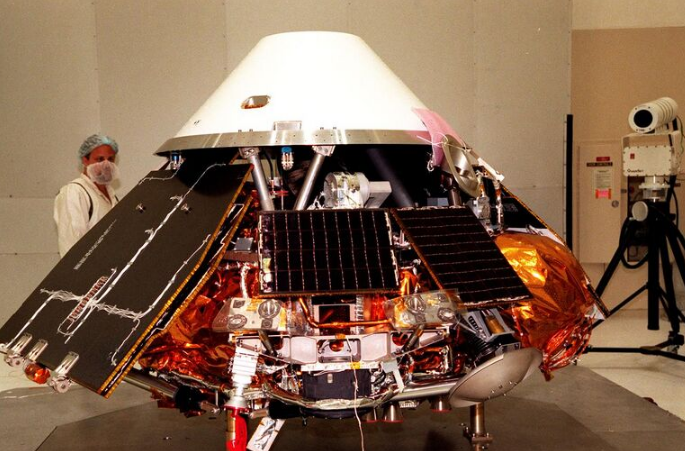The Mars Surveyor '98 program comprised two spacecraft launched separately, the Mars Climate Orbiter (formerly the Mars Surveyor '98 Orbiter) and the Mars Polar Lander (formerly the Mars Surveyor '98 Lander); on board the Mars Polar Lander spacecraft were two surface-penetrator probes (Deep Space 2). The two missions were to study the Martian weather, climate, water and carbon dioxide (CO2) budget, to understand the reservoirs, behavior, and atmospheric role of volatiles and to search for evidence of long-term and episodic climate changes. Both spacecraft were launched during the 1998 Mars orbit insertion launch window. Both were lost, including the penetrator probes.
- climate
- volatiles
- co2
1. Loss of the Orbiter
The orbiter was lost due to a miscalculation in trajectory caused by an unintended and undetected mismatch between metric and English units of measurement.[1] The use of metric units as well as the data formats to employ were specified in a navigation software interface specification (SIS) published by JPL in 1996. Despite this, the flight operations team at Lockheed Martin provided impulse data in English units of pound-force seconds rather than newton seconds. These values were incorrect by a factor of 4.45 (1 lbf = 4.45 N). This caused erroneous course corrections that caused the orbiter to descend too low in Mars's atmosphere. The vehicle either burned up or bounced off into space.
2. Loss of the Lander
Investigators concluded that the most likely cause of the lander's failure was a spurious sensor signal associated with the craft's legs falsely indicating the craft had touched down when in fact it was some 40 meters above the surface. When the landing legs unfolded they made a bouncing motion that accidentally set off the landing sensors, causing the descent engines to shut down prematurely and the lander to fall. Another possible reason for failure was inadequate preheating of catalysis beds for the pulsing rocket thrusters. Hydrazine fuel decomposes on the beds to make hot gases that are forced out of the rocket nozzles, generating thrust; in crash review tests cold catalysis beds caused misfiring and instability.

3. Cost
The Mars Surveyor 1998 program spacecraft development cost US$193.1 million. Launch costs for the Mars Surveyor '98 Program was estimated at US$91.7 million and mission operations at US$42.8 million.[2] The Mars Climate Orbiter was part of NASA's 10-year Mars Surveyor Program, with launches every 26 months when the Earth and Mars are favorably positioned.
The content is sourced from: https://handwiki.org/wiki/Astronomy:Mars_Surveyor_%2798_program
 Encyclopedia
Encyclopedia
